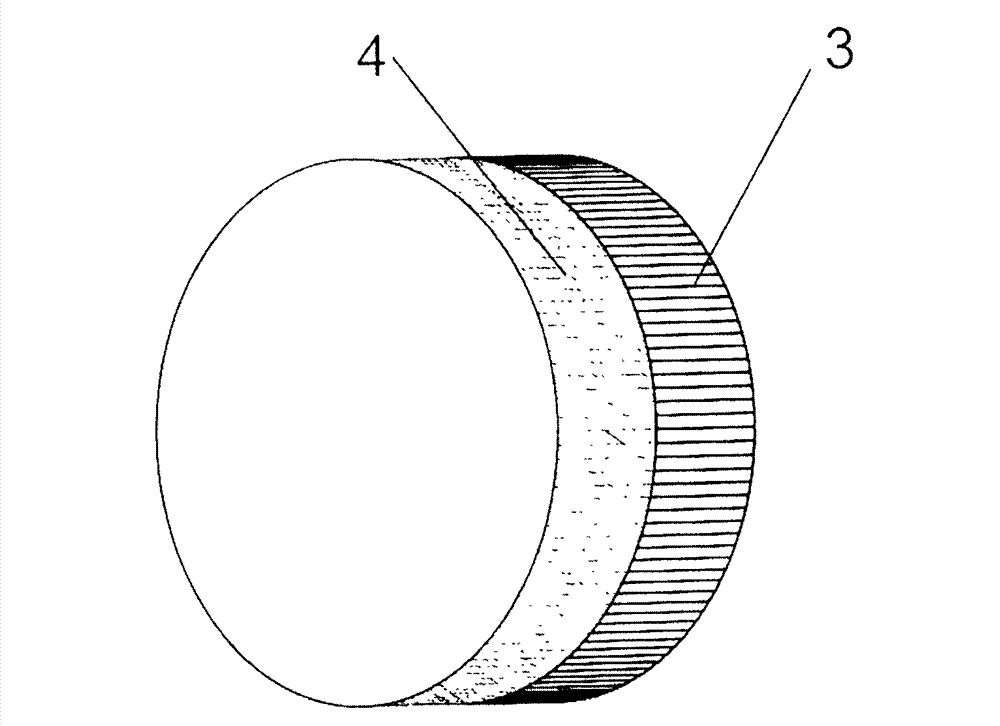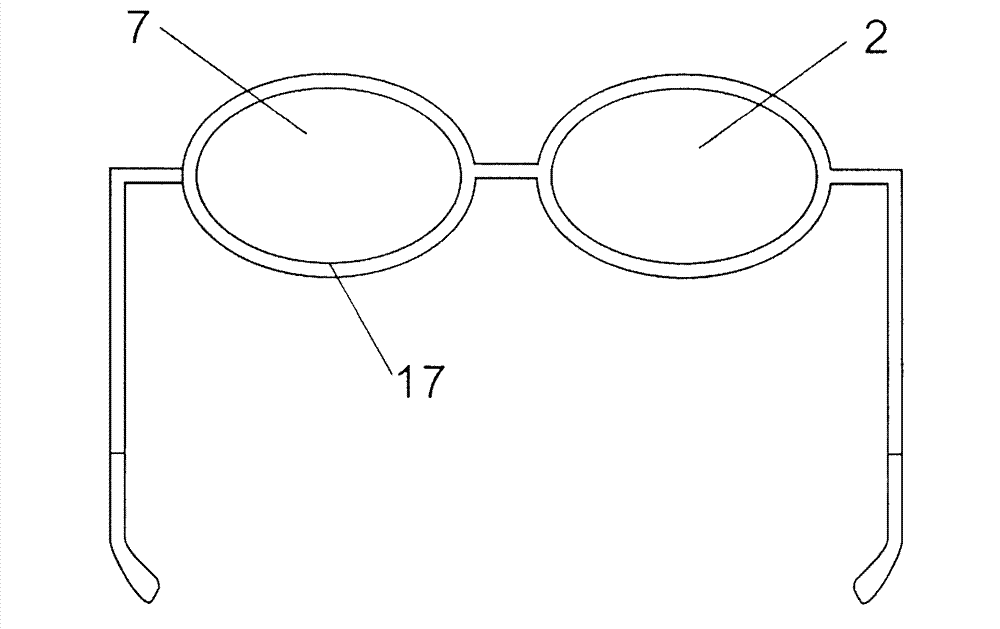Press-on lens capable of correcting retinal peripheral defocus
A lens and pressing technology, which is applied in the field of glasses, can solve problems such as unscientific, slow emmetropization of hyperopic eyeballs, unreasonable design of the peripheral parts of spectacle lenses, etc., and achieve the effect of easy pasting and use
- Summary
- Abstract
- Description
- Claims
- Application Information
AI Technical Summary
Problems solved by technology
Method used
Image
Examples
preparation example Construction
[0056] Here's how to make this press-fit lens:
[0057] These press-fit lenses are selected from soft clear plastic polymer materials, also known as plastics. Selected from polycarbonate, polyimide, polyethylene, polyvinyl alcohol, polystyrene, polyvinyl chloride, polypropylene, polyurethane, polytetrafluoroethylene, polyhydroxyethyl acrylic methyl ester, polymethacrylic ethyl ester, polymethyl methacrylate, glyceryl methacrylate, monopolymer of methyl cyclohexyl acrylate, acrylamide, polystyrene-methyl methacrylate, propylene-styrene, polyethylene terephthalate One or more of alcohol esters, polyethylene naphthalate, and vinylpyrrolidone are used as the pressing lens material. It is preferably selected from polyvinyl alcohol, polyurethane, and polyvinyl chloride as raw materials. A film-like flexible refractive lens with a thickness of 0.5 mm to 2.0 mm is prepared by centrifugal casting method, cutting grinding method or direct molding method, preferably with a thickness of...
Embodiment 1
[0071] Embodiment 1 (popularizing type I myopia peripheral defocus correction glasses)
[0072] Lens design: The central optical zone of the press-fit lens is prepared into a flat lens or a notched lens, and the peripheral optical zone is +1.00DS, +1.50DS, +2.00DS, +2.50DS, +3.00DS five types of convex lens lenses, the central optics The region is prepared as a circular, oval, badminton, nail-shaped central peripheral bifocal or gradient central peripheral bifocal press-fit lens, which is pasted on the plain lens in the ordinary frame glasses.
[0073] Indications: 6 to 18 years old, one parent has myopia, normal vision, or adolescent myopia.
[0074] Wearing method: Wear it when you are in class or reading a book. The central part of the lens can be used for distance or near vision. When near vision, the peripheral part of the lens can correct peripheral hyperopia and prevent the occurrence of myopia.
Embodiment 2
[0075] Embodiment 2 (popularizing Type II myopia peripheral defocus correction glasses)
[0076] Lens design: the design of the press-fit lens is the same as in embodiment 1, except that the press-fit lens is pasted on the flat lens in the additional frame.
[0077] Indications: It is suitable for young people with myopia and the correction degree of the original glasses does not need to be changed. The additional glasses with a circular, oval, badminton, and nail-shaped central optical zone of the press-fit lens are suitable for the original glasses with a single-light concave lens, and the additional glasses with a badminton-shaped or nail-shaped central optical zone. Those who have glasses with bifocal lenses or progressive multifocal lenses.
[0078] How to wear: Wear the original myopia glasses for daily activities. When attending class or reading a book, install the additional glasses on top of the original glasses.
PUM
| Property | Measurement | Unit |
|---|---|---|
| Height | aaaaa | aaaaa |
| Diopter | aaaaa | aaaaa |
| Thickness | aaaaa | aaaaa |
Abstract
Description
Claims
Application Information
 Login to View More
Login to View More - R&D
- Intellectual Property
- Life Sciences
- Materials
- Tech Scout
- Unparalleled Data Quality
- Higher Quality Content
- 60% Fewer Hallucinations
Browse by: Latest US Patents, China's latest patents, Technical Efficacy Thesaurus, Application Domain, Technology Topic, Popular Technical Reports.
© 2025 PatSnap. All rights reserved.Legal|Privacy policy|Modern Slavery Act Transparency Statement|Sitemap|About US| Contact US: help@patsnap.com



